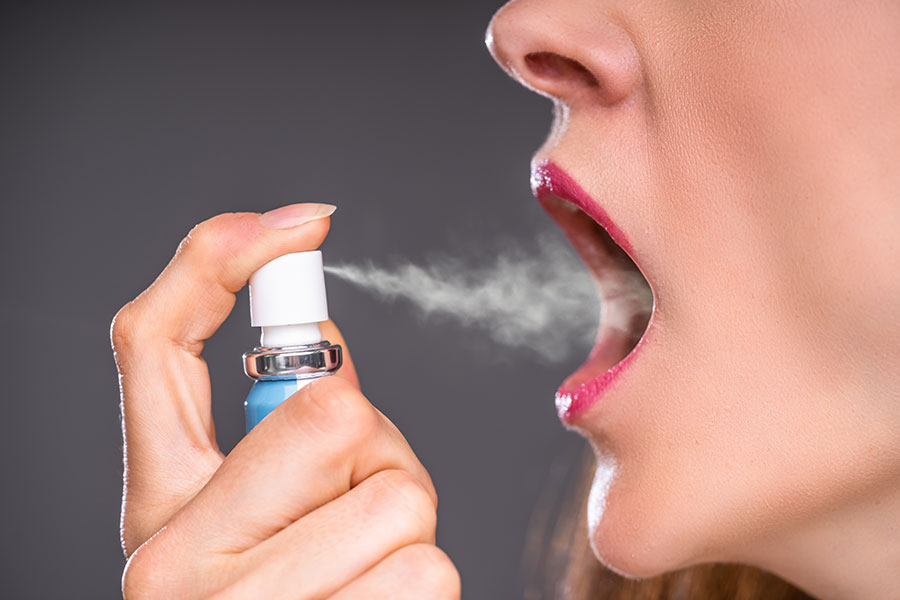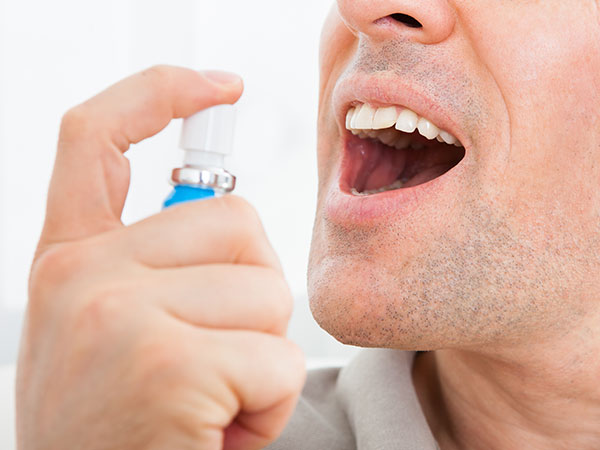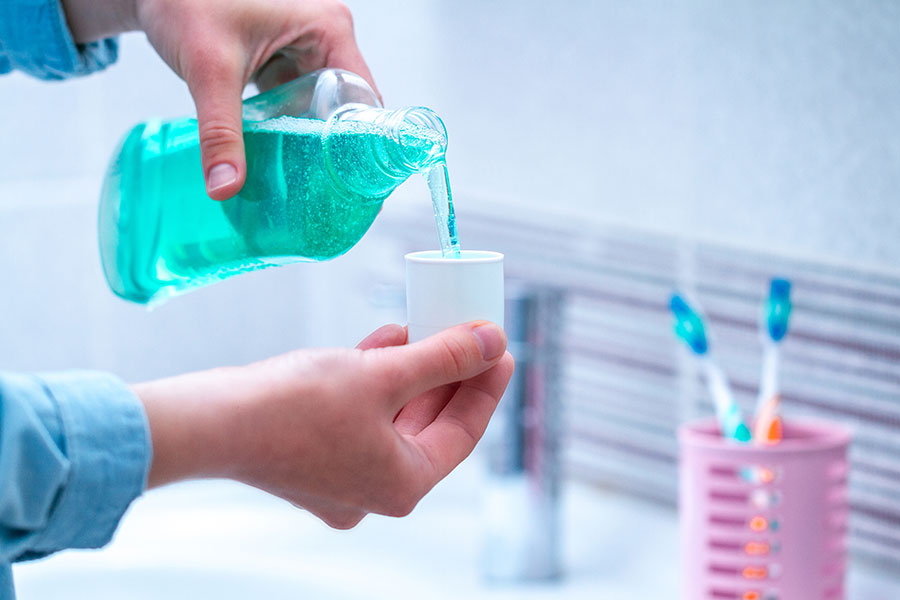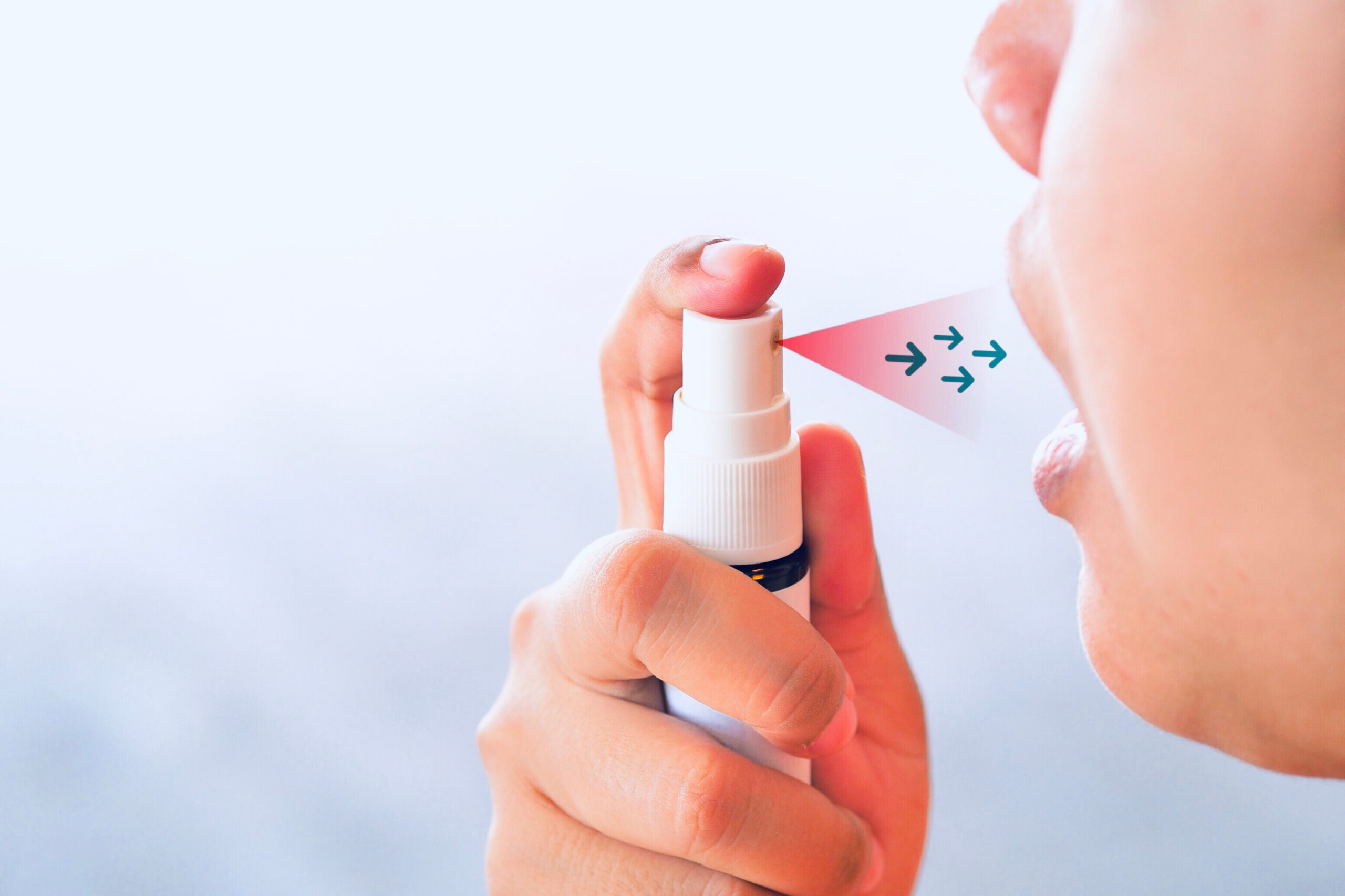
Good oral hygiene is essential for maintaining healthy teeth and gums, as well as overall well-being. While brushing and flossing are fundamental practices for oral care, using complementary oral care products can help to freshen breath, reduce plaque, and strengthen enamel. One such product is the mouth freshener, also known as a breath spray, which provides a quick and convenient method to freshen breath on-the-go.
In this article, we will delve into the science behind mouth fresheners, exploring how they work to combat oral odor and examining the benefits and risks of their use. So, whether you are a long-time user of mouth fresheners or just curious about how they work, read on to discover the fascinating world of oral care products.
What are Mouth Fresheners?

Mouth fresheners, or breath sprays, are a type of oral care product that help to eliminate bad breath by masking odor or killing odor-causing bacteria. They come in a variety of formulations and formats, including sprays, mints, gum, and lozenges.
Compared to other oral care products such as toothpaste, mouthwash, and dental floss, mouth fresheners provide an immediate, on-the-go solution to combat oral odor. They are particularly helpful for those who frequently consume odor-causing foods and beverages or suffer from dry mouth, a condition that reduces saliva flow and leads to bad breath.
Although similar in function to other breath freshening products, such as mints and gum, mouth fresheners are formulated to provide longer-lasting freshness and greater efficacy in eliminating bad breath. They often contain active ingredients such as menthol, peppermint oil, and eucalyptus, which provide a cooling sensation and create an odor-masking effect.
As oral care manufacturers place greater emphasis on the importance of oral hygiene, mouth fresheners have become a popular addition to the oral care product lineups. Private label oral care products in particular often include mouth fresheners in their offerings, providing consumers with a variety of options to choose from based on their preferences and needs.
How Do Mouth Fresheners Work?

| Mouth Freshener Type | Active Ingredient(s) | How it Works |
| Breath mints | Menthol, peppermint oil, eucalyptus oil | Create a cooling sensation, mask bad breath, stimulate saliva production |
| Chewing gum | Xylitol, sorbitol | Stimulate saliva production, help remove bacteria and food debris from the mouth, inhibit oral bacteria growth |
| Mouthwash | Essential oils, chlorhexidine, hydrogen peroxide | Kill or reduce odor-causing bacteria, neutralize volatile sulfur compounds |
| Oral sprays | Essential oils, sodium bicarbonate, zinc chloride | Similar to mouthwash, more convenient for on-the-go use, longer-lasting effect (in some cases) |
Mouth odor, or halitosis, is a common concern for many people. It is caused by the breakdown of food particles in the mouth by bacteria, which produce foul-smelling sulfur compounds as a byproduct. Poor oral hygiene, dry mouth, and certain medical conditions can exacerbate mouth odor.
Mouth fresheners work by neutralizing or masking these odor-causing compounds to provide fresh, pleasant breath. They do so in different ways depending on their formulation and active ingredients.
Breath sprays and lozenges often contain antimicrobial agents such as cetylpyridinium chloride or chlorhexidine, which kill the bacteria that produce odor. On the other hand, mints and gum generally work by creating a strong, minty aroma that overpowers the malodor.
At a molecular level, the active ingredients in mouth fresheners interact with the odor-causing compounds to either bind to them or change their chemical structure, thereby reducing or eliminating the odor. For example, menthol and peppermint oil work by activating the TRPM8 receptor in the mouth, which provides a cooling sensation and masks the odor.
While mouth fresheners provide a quick and easy solution to bad breath, it’s important to note that they do not address the root cause of mouth odor. Maintaining good oral hygiene, drinking plenty of water, and consuming a balanced diet can all help to prevent halitosis.
Ingredients in Mouth Fresheners

Mouth fresheners can contain a wide range of active ingredients that work to combat bad breath and freshen breath. Here are some of the most common ingredients found in breath sprays, mints, gum, and lozenges:
Menthol
A natural compound found in plants such as peppermint and spearmint, menthol has a cooling and refreshing effect on the mouth. It works by activating the TRPM8 receptor, which produces a cold sensation and masks malodor.
Peppermint
In addition to menthol, peppermint oil contains other compounds such as limonene and cineole, which have anti-inflammatory and antimicrobial properties. Peppermint oil helps to freshen breath by reducing oral bacteria and providing a fresh, minty flavor.
Eucalyptus
Eucalyptus oil is a common ingredient in mouth fresheners due to its strong, refreshing aroma. It also has antibacterial properties that help to reduce the number of odor-producing bacteria in the mouth.
Cinnamon
Cinnamon is a popular flavoring agent in gum and mints. It works by reducing the number of bacteria in the mouth and providing a spicy, refreshing flavor.
Chlorine Dioxide
Some breath sprays contain chlorine dioxide, a powerful oxidizing agent that neutralizes sulfur compounds in the mouth. It is highly effective at eliminating bad breath, but should be used with caution as it can cause irritation if used excessively.
While these ingredients provide temporary relief from bad breath, it’s important to maintain proper oral hygiene practices to address the underlying causes of malodor. This includes regular brushing and flossing, as well as using mouthwash to rinse away bacteria and food particles.
In conclusion, mouth fresheners can be a helpful addition to oral care routines, particularly for those who suffer from bad breath. By understanding the active ingredients in these products and how they work, consumers can choose the best mouth freshener for their needs and preferences.
Benefits of Mouth Fresheners
.jpg)
Mouth fresheners provide a range of benefits beyond just freshening breath. Here are some of the potential benefits of using mouth fresheners for oral hygiene:
Preventing Tooth Decay
Many mouth fresheners contain xylitol, a natural sweetener that has been shown to reduce the risk of tooth decay. Xylitol helps to neutralize acids in the mouth and stimulate saliva production, which helps to wash away bacteria and food particles.
Reducing Plaque Buildup
Some mouth fresheners contain active ingredients such as zinc chloride, which help to reduce the formation of plaque on teeth. Plaque buildup can lead to tooth decay and gum disease, so using mouth fresheners that help to reduce plaque can be an effective way to maintain oral health.
Freshening Breath
This is the most obvious benefit of mouth fresheners, but it’s worth noting that good breath can have a positive impact on social and professional interactions. Mouth fresheners provide a convenient way to freshen breath on-the-go, making it easier to maintain good oral hygiene throughout the day.
Reducing Dry Mouth
Dry mouth is a condition that occurs when there is not enough saliva in the mouth. This can lead to bad breath and an increased risk of tooth decay and gum disease. Some mouth fresheners contain ingredients such as glycerin or sorbitol, which help to lubricate the mouth and reduce dryness.
It’s important to note that while mouth fresheners can provide these benefits, they are not a replacement for good oral hygiene practices such as brushing and flossing. Regular dental checkups and cleanings are also essential for maintaining healthy teeth and gums.
In summary, mouth fresheners can provide a range of benefits for oral hygiene, from preventing tooth decay to freshening breath. Incorporating them into an oral care routine can help to improve overall oral health and well-being.
Key Takeaways

In this article, we explored the world of mouth fresheners, delving into the science behind how they work to combat oral odor and examining their benefits and potential risks. Here are some key takeaways:
- Mouth fresheners can provide a quick and convenient solution to bad breath, but they are not a replacement for good oral hygiene practices.
- Active ingredients such as menthol, peppermint, and eucalyptus work to reduce oral bacteria and mask malodor, while others such as xylitol and zinc chloride help to prevent tooth decay and reduce plaque buildup.
- When selecting and using mouth fresheners, it’s important to look for products that contain effective active ingredients and to use them as directed.
- Mouth fresheners come in a variety of formats and formulations, so consumers can choose the one that best fits their needs and preferences.
- Good oral hygiene practices such as brushing and flossing, drinking plenty of water, and avoiding certain foods can help to prevent bad breath and maintain overall oral health.
Conclusion

In conclusion, while mouth fresheners provide a convenient way to freshen breath and combat bad odor, they should be seen as a complementary tool to good oral hygiene practices rather than a standalone solution. By incorporating mouth fresheners into an oral care routine and maintaining good oral hygiene practices, consumers can help to keep their teeth and gums healthy and their breath fresh.



